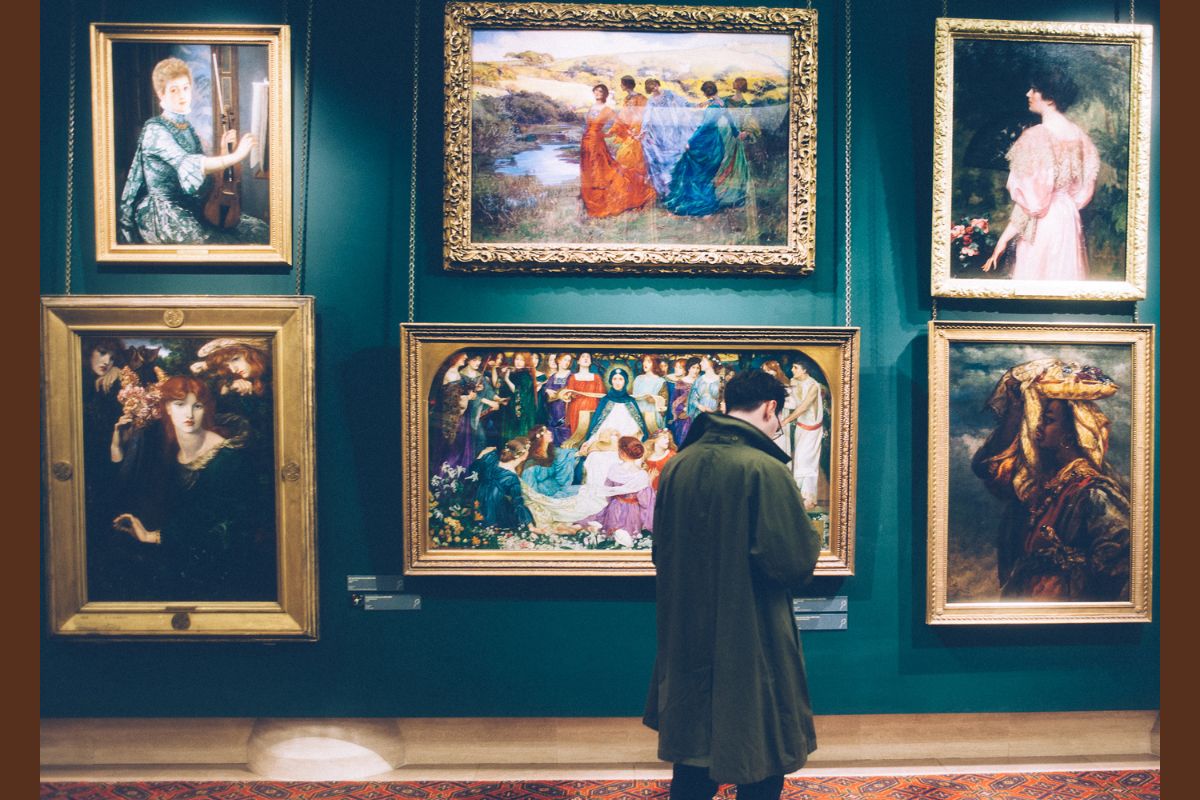Art, in its myriad forms, transcends the boundaries of time and space, speaking to the depths of the human soul and embodying the essence of cultural expression. The act of owning important art pieces is far more than a transaction; it is a journey of discovery, connection, and enrichment.
In this exploration, we delve into the multifaceted significance of owning art, from its emotional resonance and educational value to its role in preserving cultural heritage and fostering a sense of community.
Table of Contents
Connecting Through Creativity: The Emotional Impact of Art Ownership
At the heart of art ownership lies a profound emotional connection. Each piece, whether a masterpiece from the Renaissance or a contemporary creation, carries with it a unique energy and story. By surrounding ourselves with meaningful artworks, we invite these narratives into our lives, fostering a sense of intimacy and resonance.
The colors, shapes, and textures of art have the power to evoke a wide range of emotions, from joy and serenity to introspection and awe. In this way, owning important art pieces becomes a deeply personal and enriching experience, enriching our daily lives with beauty and inspiration.
Acquiring original paintings for sale adds an additional layer of fascination and opportunity for collectors to enrich their personal galleries with unique masterpieces.
Aesthetic Enlightenment: Nourishing the Soul Through Art
The presence of art in our living spaces transcends mere decoration; it nourishes the soul and stimulates the imagination. Whether it’s the serene beauty of a landscape painting, the dynamic energy of a sculpture, or the intricate craftsmanship of a textile, art has the power to uplift and transform our surroundings.
Studies have shown that exposure to art can reduce stress, enhance mood, and promote overall well-being. By curating a collection of important art pieces, individuals create a sanctuary for contemplation and self-expression, enriching their lives on a profound aesthetic level.
Exploring Cultural Narratives: The Educational Value of Art Ownership
Art serves as a visual encyclopedia of human history, offering insights into diverse cultures, ideologies, and historical moments. Owning important art pieces provides a gateway to learning and discovery, allowing individuals to delve into different periods and movements.
Whether studying the symbolism of religious art or tracing the evolution of artistic techniques, owning art fosters a lifelong journey of education and enlightenment.
Moreover, exposing children to art from a young age can spark their curiosity and critical thinking skills, laying the foundation for a deeper appreciation of the arts and humanities.
Preserving Heritage: The Role of Art Ownership in Cultural Conservation
Many important art pieces hold significant historical or religious importance, serving as tangible links to the past. By owning and preserving these treasures, collectors and institutions play a crucial role in safeguarding cultural heritage for future generations.
The public display of important artworks fosters a sense of pride and identity within communities, celebrating their unique heritage and contributions to the broader tapestry of human civilization.
Furthermore, supporting the arts through ownership and patronage ensures the continued vitality and preservation of cultural traditions, ensuring that they endure for centuries to come.
Cultivating a Legacy: Art as a Testament to Human Creativity
In a world often consumed by materialism and instant gratification, owning important art pieces offers a counterbalance—a testament to the enduring power of human creativity and expression. Unlike mass-produced commodities, art endures through the ages, carrying with it the imprint of countless lives and experiences.
By investing in art, individuals affirm the intrinsic value of craftsmanship, imagination, and cultural exchange. In doing so, they leave behind a legacy that transcends generations, enriching the world with beauty, insight, and inspiration.
Art as a Catalyst for Inspiration and Innovation
Beyond its inherent beauty and historical significance, owning important art pieces can also serve as a catalyst for creativity and innovation. Art has a unique ability to challenge our perceptions, provoke thought, and inspire new ways of seeing the world. By engaging with diverse artistic styles and perspectives, individuals can expand their creative horizons, sparking innovation in various fields, from design and architecture to technology and science.
Consider, for example, the impact of abstract expressionism on the field of psychology or the influence of Japanese woodblock prints on the development of Impressionism in Western art.
These cross-cultural exchanges and artistic dialogues have shaped the course of human history, driving progress and evolution in both artistic expression and societal values. By owning important art pieces, individuals become part of this rich tapestry of creative exchange, fostering a culture of innovation and exploration.
Conclusion
In conclusion, the act of owning important art pieces is a deeply meaningful and enriching endeavor that extends far beyond the realm of material possession. It is a journey of emotional connection, aesthetic enlightenment, and cultural exploration.
By surrounding ourselves with meaningful artworks, we enrich our lives and contribute to the preservation and celebration of human creativity and heritage. In this sense, the pursuit of art is not merely a luxury but a profound act of stewardship, enriching our lives and the world around us.
















